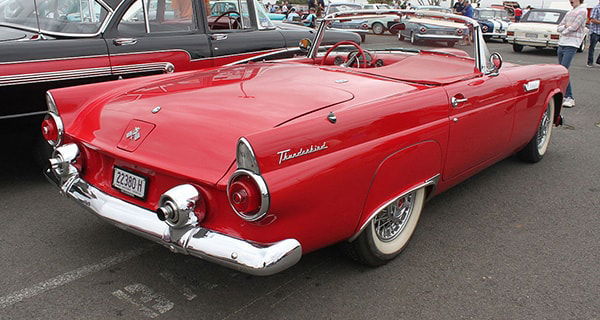6 Remarkable Classic Cars Of The 1950s

In the 1950s, the car industry experienced an increase in demand. Designers took inspiration from the transport industry and motors were built with chrome exteriors. It was an era of luxury, with classic cars sporting tail fins and shiny wheels. ‘50s cars were all about speed and style, and here are six of the best the decade had to offer.
1957 Chrysler Plymouth Fury
Originally, Plymouth cars were cheap and practical. But as demand increased, Plymouth adopted the flashy approach of the ‘50s. The Fury was introduced in 1957 to cater to a generation who favoured style over practicality. The Fury featured tail fins and elegant curves that made it one of the stand out cars of the 1950s.
1955 Ford Thunderbird
The first Ford Thunderbird came out in 1955 and was an instant hit with car fans. The motor was presented as a two-seater convertible with a personal touch. This made it an attractive alternative to larger cars that were on the road at the time. The Thunderbird featured a powerful V8 engine and tasteful wheel spats, making it a wonderful vehicle to drive.
1959 Austin Mini MK1
A quintessentially British car, the Mark 1 Mini was defined by its sliding windows and ‘moustache’ grille. It revolutionised the industry with its transverse engine and transverse front-wheel drive design. Despite it’s small size, the car was able to fit four people.
1955 Citroen DS
The 1955 Citroen DS is a classic example of how the space age took the 1950s by storm. The car’s futuristic styling made it very popular. It featured advanced hydraulic suspension and steering that made it easy to handle. The DS also featured innovative technology like a semi-automatic gearbox and disc brakes.
1957 Chevrolet Corvette
The Corvette was introduced as a competitor to the Thunderbird. The 1957 came with a V8 engine and sleek design that made it an iconic car of the ‘50s. The Corvette was capable of producing 283 horsepower and reaching a speed of 132 mph.
1958 Aston Martin DB4
This beautiful car was revealed at the London Motor Show in 1958 to much acclaim. It was the first production car that was capable of 0-100 mph in under 30 seconds. The DB4’s timeless look was developed by Carrozzeria Touring of Milan, using their ‘Superleggera’ method. This process involved aluminum panels being fixed to a frame and built onto a platform chassis.


